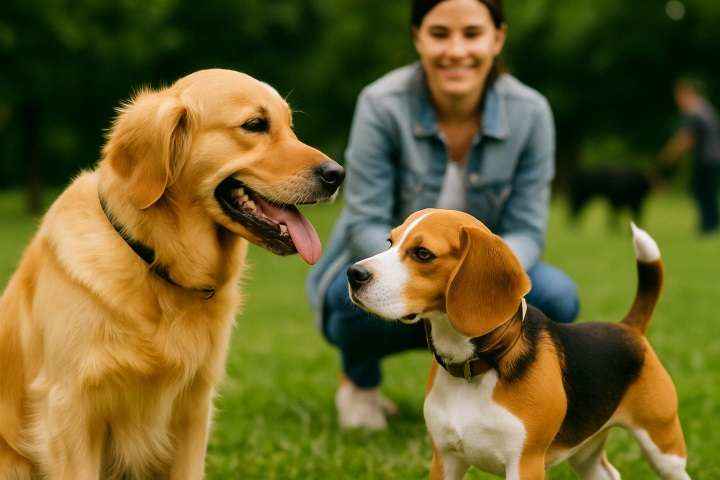Socialization is one of the most important parts of raising a well-behaved, confident dog. A properly socialized dog knows how to behave calmly and appropriately around other dogs, strangers, children, noises, and new environments—without fear, reactivity, or stress.
Whether you’ve got a young puppy or an adult rescue, it’s never too late to teach your dog how to interact safely and positively. In this guide, we’ll walk you through how to socialize your dog step by step, and what to avoid for long-term success.
What Is Dog Socialization?
Socialization is the process of exposing your dog to new experiences, people, animals, and environments in a way that helps them feel safe and relaxed.
The goal is to teach your dog that new things are normal—not scary or threatening.
Why Socialization Is So Important
Proper socialization helps prevent:
- Fear-based aggression or anxiety
- Excessive barking or reactivity
- Resource guarding or leash pulling
- Panic in unfamiliar environments
- Poor behavior around guests or other dogs
Well-socialized dogs are more confident, easier to train, and safer in public.
When to Start Socializing Your Dog
Puppies (8–16 weeks)
This is the critical socialization window—experiences during this time have lifelong impact. Positive exposure now helps prevent fear and aggression later.
Tip: Start early, but always after basic vaccinations or in safe, clean spaces.
Adult Dogs
Older dogs can be socialized too—it just takes more patience and consistency. Go slow and use positive reinforcement at every step.
How to Socialize Your Dog: Step-by-Step Guide
1. Start at Home with Controlled Experiences
Begin in a calm, familiar environment:
- Invite quiet guests one at a time
- Practice polite greetings with friends
- Introduce basic obedience before adding distractions
- Play videos of dogs barking or crowds to desensitize gradually
Reward calmness and ignore nervous behaviors unless redirection is needed.
2. Use Positive Exposure to New Dogs and People
Set up safe, positive introductions:
- Choose calm, vaccinated dogs for early play
- Let dogs meet on neutral ground (like a park, not your home)
- Use parallel walking before allowing direct interaction
- Keep leashes loose and short—tension causes anxiety
- Watch for calming signals: sniffing, turning away, wagging low
Don’t force interaction—always let your dog approach at their own pace.
3. Enroll in Puppy Classes or Group Walks
Structured social settings help dogs:
- Learn polite behavior around others
- Gain exposure to different breeds and people
- Practice focus and obedience under light distractions
Look for positive reinforcement-based trainers and small class sizes.
4. Expose Your Dog to Different Environments
Variety is key for confident dogs. Practice calm behavior in:
- Parks, sidewalks, and outdoor cafés
- Vets, groomers, or pet stores (on-leash)
- Car rides and elevators
- Urban vs. quiet areas
- Around bikes, strollers, and umbrellas
Always go at your dog’s pace and reward calm curiosity.
5. Use Treats and Praise to Build Positive Associations
Every time your dog sees or interacts calmly with:
- A person (adult or child)
- Another dog
- A loud sound or new environment
…reward them immediately! This builds trust and positive associations.
What Not to Do When Socializing
- ❌ Don’t force interactions or pull your dog toward people or dogs
- ❌ Don’t punish fearful or reactive behavior—redirect instead
- ❌ Don’t overwhelm your dog with too many stimuli at once
- ❌ Don’t introduce to aggressive or pushy dogs early on
- ❌ Don’t assume all dogs like dog parks—they’re not for everyone
Reading Your Dog’s Body Language
Watch for signs of stress or discomfort:
- Tucked tail
- Lip licking or yawning
- Ears pinned back
- Avoiding eye contact or trying to leave
If you see these signs, give space and try again another day.
Conclusion
Final Thoughts on How to Socialize Your Dog
Socializing your dog is a lifelong process that builds confidence, trust, and emotional stability. With consistent, positive exposure to people, dogs, and environments, your dog will grow into a calm, well-mannered companion—ready to enjoy the world with you.
Need a printable socialization checklist or weekly progress log? Visit our Dog Socialization Hub for free tools and expert advice.

